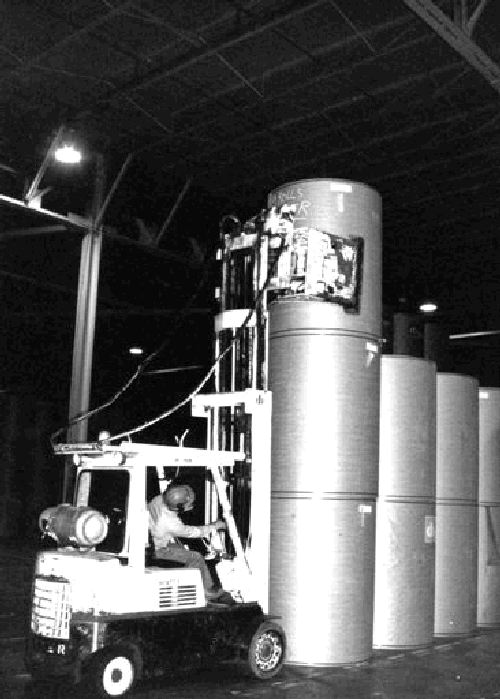
Features
Research & Innovation
Plant Maintenance and Safety
Plant maintenance impacts enterprise safety two ways: plant safety that affects all employees and maintenance worker safety during maintenance activities.Preventive Maintenance: Every plant should hav...
November 1, 2002 By Pulp & Paper Canada
 Plant safety affects all employees
Plant safety affects all employees Plant maintenance impacts enterprise safety two ways: plant safety that affects all employees and maintenance worker safety during maintenance activities.
Preventive Maintenance: Every plant should have a system to ensure preventive or predictive maintenance and servicing of all equipment that may be in use or storage. A planned maintenance program is necessary to ensure the safe operation of all equipment including machinery, vehicles and tools. Even if not the most critical, equipment needs good care. Good maintenance prevents premature wear or breakdown contributing to both safety and loss control. It can also identify abuse as a symptom of a possible training, employee motivation or design problem.
The Preventive Maintenance system should include a critical equipment/part inspection and maintenance program using the most qualified people, to ensure that those critical components that are more likely to cause a major loss through accident or breakdown are identified, inspected, maintained or replaced before they fail.
Planning and Scheduling: Any maintenance work should be fully planned, whether scheduled (shutdowns) or unforeseen (on the run) for cost-effectiveness. In addition, “it is much safer to execute planned work because the hazards are methodically identified and avoided”.2
Cost Records: Most equipment damage due to accidental causes is not insured, is classed as “normal” maintenance, and is charged as an operating expense. It is important to identify and document these repairs as retained accidental losses which are part of the plant’s “Total Cost of OHS Risk” (see P&PC Safety Matters, September 2002, p.58). Stopping these losses goes straight to the bottom line.
Pre-Task Planning: The above quote is a noble objective by the safety profession. In the meantime, the best solution for maintenance workers is to rely on Pre-Task Planning to plan for all maintenance work, even for preliminary equipment troubleshooting and diagnostic activity (see P&PC Aug /02, “Machine Design Safety.” p.58 “Kenogami fatality). Pre-task planning emphasizes procedures to identify task hazards and necessary risk controls. This calls for training in job hazard analysis and pre-task planning skills. P&PC
REFERENCES
1. IDCON-Christer Idhammar, Pres. & CEO, http://www.idcon.com/articles/articles.htm
2. Dave Krings, “Proactive Approach to Shutdowns…”, Pulp & Paper, Dec 2001, p.27-29
3. “Safety through Design: A Brief Synopsis, Part II”. Edited by Wayne C. Christensen and Fred A. Manuele, www.nsc.org
John E. Little is a risk management consultant. Contact him at jelittle@solabs.com
Print this page